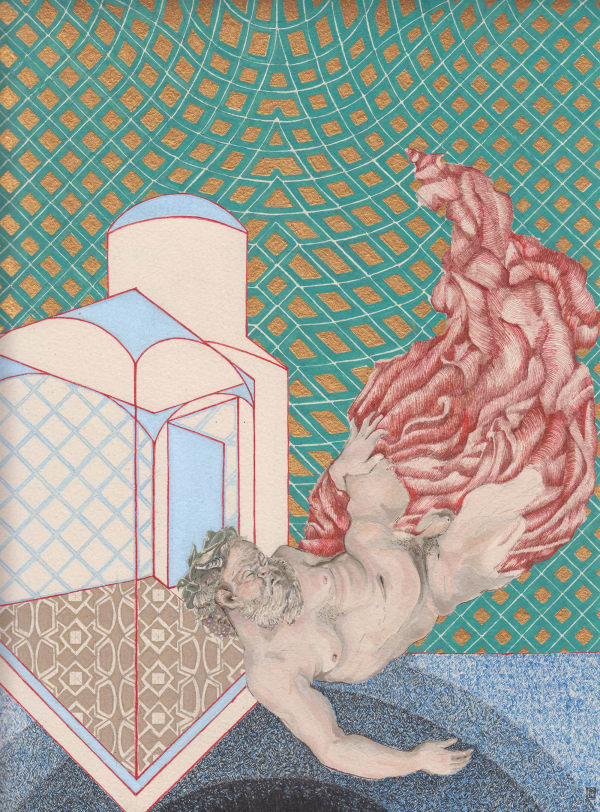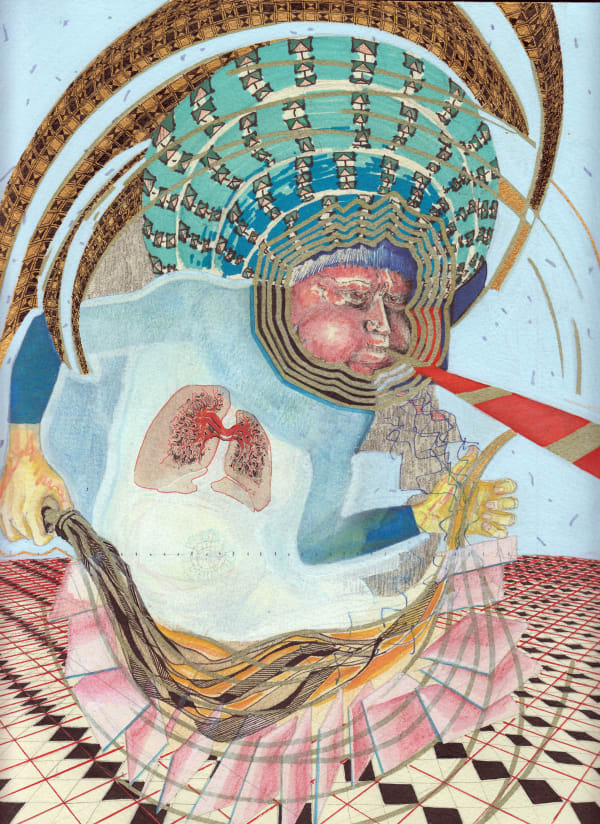

Peter Depelchin
Winds have often given direction to maps. They gave direction to the earliest representations of the world and as trees do, they form an intermediate between the sky and the earth. In relation to Depelchin’s most recent works, the winds have a singular position: they are the bridge, the thriving force to lift creator and spectator up to Depelchin’s so called creational space. Two of the winds have been represented in relation to a distorted architectural space, seemingly a pavilion or an alcove. These pavilions witness of this creational space, a twin sister of our contemporary space. Similarly, to the series of scale models called “Temple de Pan” these two architectural forms reflect on the representation of space and its effect on represented narratives.
Peter Depelchin’s series shows the four winds. Boreas, Zephyros, Notos and Euros all refer to different paintings and sources.
The East wind, Euros, represents a space similar to the one accompanying the South wind. It is nspired by the right panel of the altarpiece by Jacob de Baerze. The four-armed figure was inspired by Rubens. This time, the painting “The Rape of Orithyia by Boreas” served as a source of inspiration. The four arms refer to Indian gods and heroes often bearing more members than normal people to express their different powers. Not to mention the overall presence of blue: a color that is both physically and metaphysically omnipresent in the East.
- X
- Tumblr





